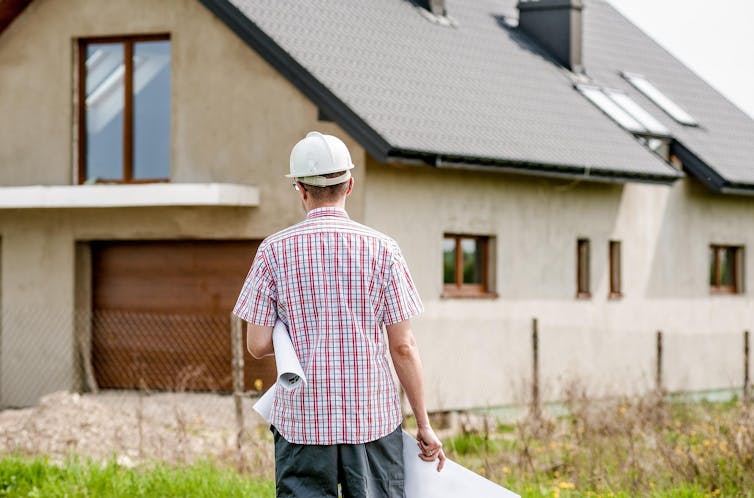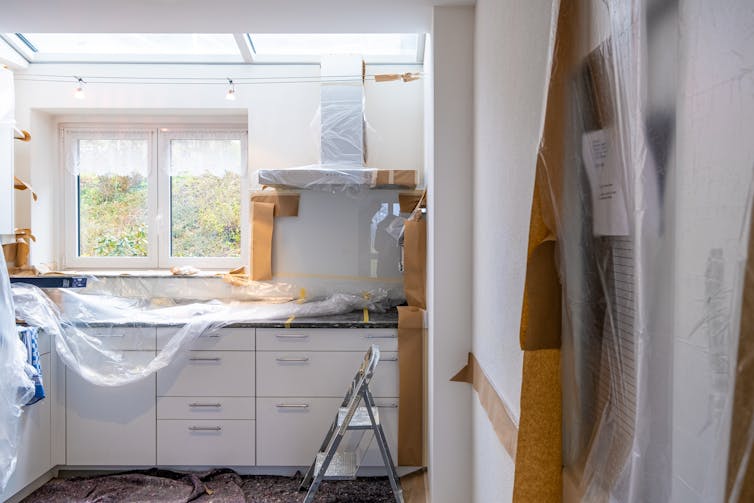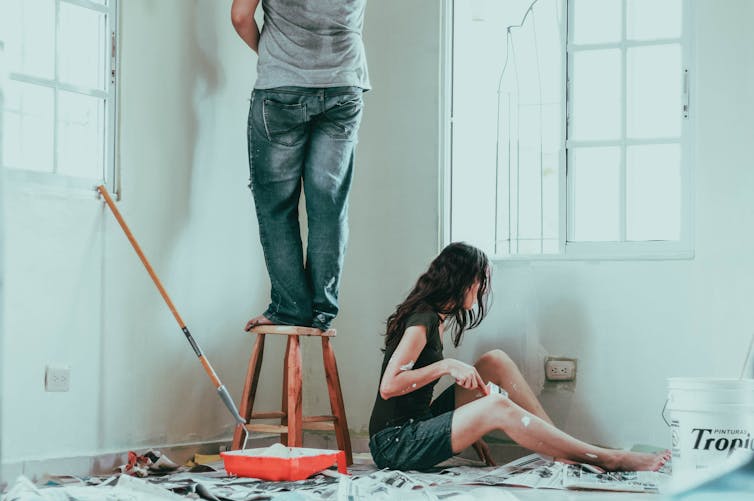 Image by Michal Jarmoluk from Pixabay, CC BY
Image by Michal Jarmoluk from Pixabay, CC BY
Di Johnson, Griffith University
Australia’s appetite for home renovations remains strong, with around A$1 billion worth of alterations and additions to homes approved in July.
But rising interest rates and shortages in labour and material may have some would-be renovators wondering: is this still a good idea?
Here are five questions worth considering.
1. What would a successful renovation look like – before, during and after?
As with any major financial decision, you need to understand how the renovation fits with your broader life goals. Why do you want to do it?
There’s a big difference between a “nice-to-have” new kitchen and a “must-have” modified bathroom for mobility needs.
Let’s say you’re choosing, rather than needing, to renovate.
Consider whether the choice is for capital gain at sale in the short term (up to five years). Flipping a property will incur transaction costs such as stamp duty and legal fees, so factor those into the overall cost. Can you still afford it?
Or are you looking to live in the house over the longer term? Will the renovation deliver lifestyle enjoyment over many years? For some, that may make a period of financial belt-tightening worth it.
It’s never just about the capital gain, increased floor space, amenity or privacy.
A renovation affects areas of life satisfaction beyond finances – including family life, relationships, work, health, and lifestyle opportunities such as being able to afford to travel.
 There’s a big difference between a ‘nice-to-have’ new kitchen and a ‘must-have’ modified bathroom. Photo by immo RENOVATION on Unsplash, CC BY
There’s a big difference between a ‘nice-to-have’ new kitchen and a ‘must-have’ modified bathroom. Photo by immo RENOVATION on Unsplash, CC BY
2. Have you done the sums?
You may have quotes from designers or builders. Check the detail including allowances for budget variations. Consider whether some changes – such as solar, good insulation and energy-smart design – may reduce bills over time.
You can use the government’s online Moneysmart calculator to work out what your increased payments would be on a larger mortgage after you’ve paid for a renovation.
Say you have a 25-year mortgage and are considering a $150,000 renovation. That may cost you around $10,000 extra annually in mortgage payments, particularly if interest rates were to increase from a variable rate of 3.5% now to 5.5% over the next few years.
That $10,000 would be in addition to the increase in repayments on your existing mortgage, which (on the average new owner-occupier Australian mortgage of about $610,000) could be around $8,500 extra if rates went up by two percentage points.
3. How much risk can you stomach?
If you had a sudden shock to your income, expenses or health, how long could you cover all your expenses without having to sell major assets or go without lifestyle staples?
This may depend on a range of factors, including whether you have income protection or other insurances, and if you have a savings buffer.
One indicator of your risk is your debt-to-income ratio (total debt divided by before-tax annual income, excluding compulsory superannuation contributions).
Lenders and regulators consider a ratio above six to be high. However, 23.1% of borrowers in the March quarter 2022 had a ratio of six or more.
Your personal debt comfort zone might be much more conservative. Only you will know how much debt you can live with before it stresses you out so much it’s not worth it.
If you have determined your full project is too risky for now, you might consider doing the renovation in stages. But while this might get you a smaller mortgage in the short term, it can cost more in the long run and draw out the time frame.
What if you’ve already had an architect or designer draw up plans and get approvals, but no longer want to renovate? You might consider selling the house with the approved plans; this is still a good value-adding option.
 A renovation can affect relationships. Photo by Roselyn Tirado on Unsplash, CC BY
A renovation can affect relationships. Photo by Roselyn Tirado on Unsplash, CC BY
4. What expert advice can you get?
Seeking expert advice from architects, designers, landscapers, builders or project managers before and during the renovation can get you better value, less stress and fewer mistakes overall.
Word-of-mouth recommendations can help, but check the Master Builder Association listings and ratings for builders, too.
It’s vital you do your due diligence on the quality, reliability, solvency, style, insurance and cost of experts you enlist.
That can include seeking advice from a building and construction expert lawyer to check the contract before you sign.
Choose someone who is easy to talk to, listens and understands your goals. The relationship with your build and design team will be crucial.
5. What role do my emotions play?
Almost every episode of renovation reality shows seems to feature an emotional breakdown and a massive budget blowout.
Emotions are an important consideration throughout your renovation. Financial decisions are never just about money.
If maintaining relationships and a healthy stress level is part of what a successful renovation looks like for you, plan ahead for that.
If that means moving into a rental for the renovation period, add it to the budget considerations.
 Renovating can be exciting but also exhausting. Photo by Christian Erfurt on Unsplash, CC BY
Renovating can be exciting but also exhausting. Photo by Christian Erfurt on Unsplash, CC BY
Renovating can be exciting and exhausting, but beware of some of the common renovation decision-making biases.
One is the sunk cost fallacy, where the time and money you’ve sunk into the project so far can make it hard to change or abandon plans.
Even paying a small deposit can lead to an irrational reluctance to change course.
Then there’s decision fatigue, where mental energy gets depleted with each decision (and there are a lot). It gets tempting to give in to whatever seems easiest at the time.
Be prepared to take more time to contemplate high-stakes decisions, and get advice, particularly in areas where you have no experience. Getting the right advice at the right time over a renovation could be among the most important financial decisions you ever make.
Di Johnson, Lecturer in Finance, Griffith University
This article is republished from The Conversation under a Creative Commons license. Read the original article.

